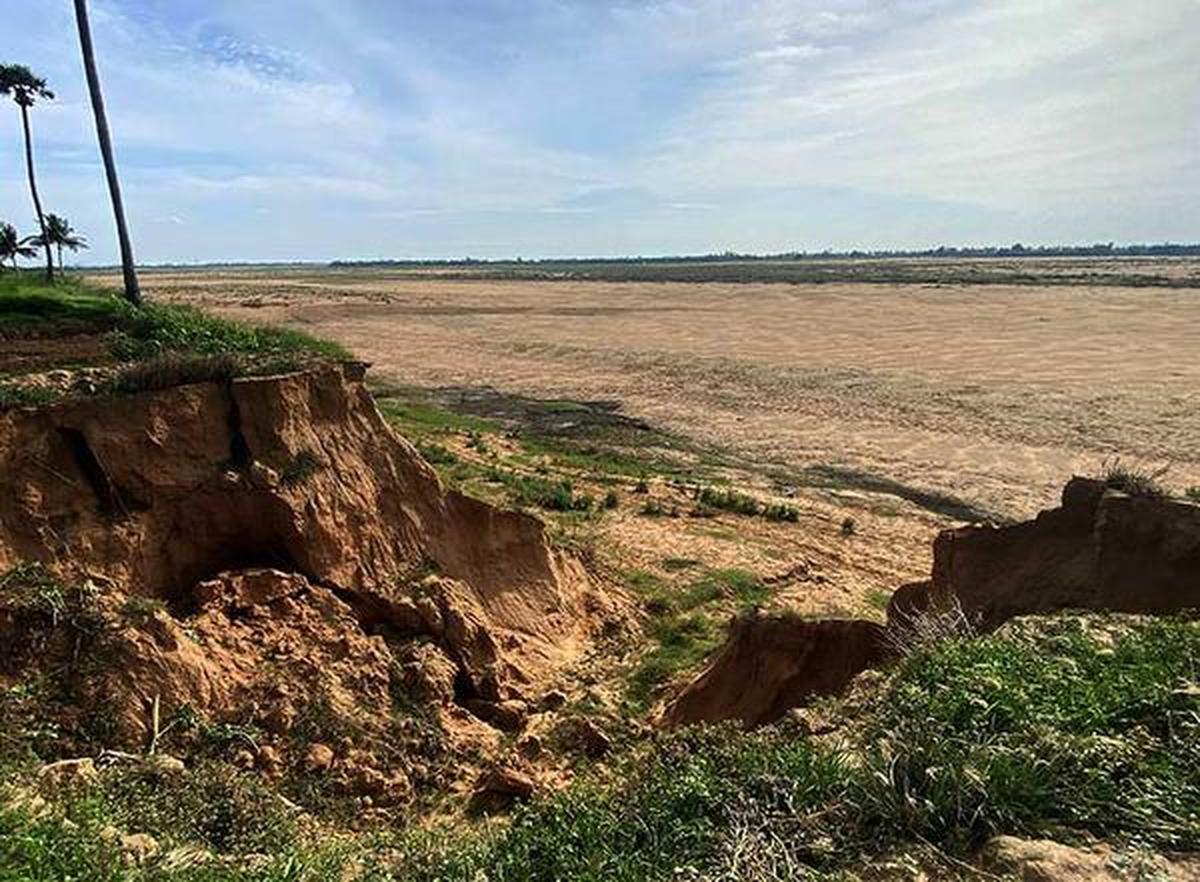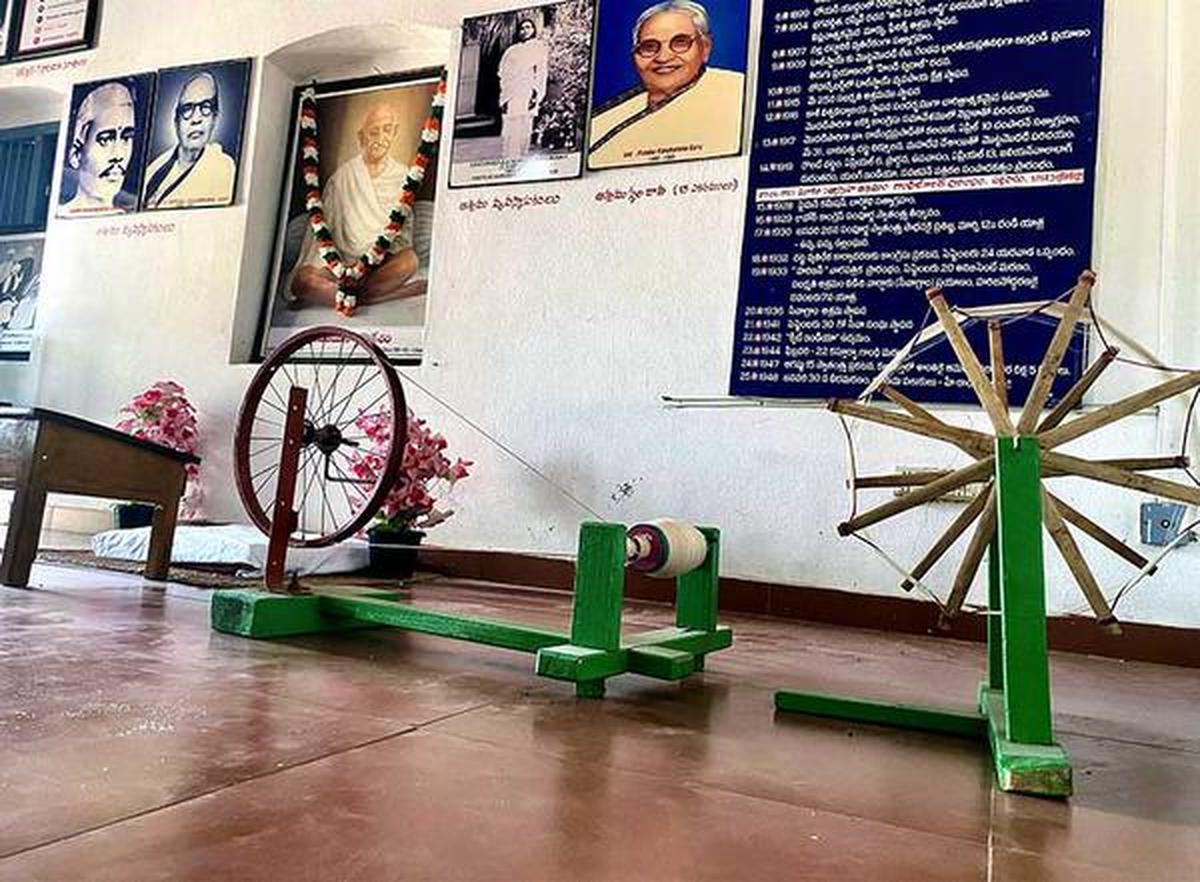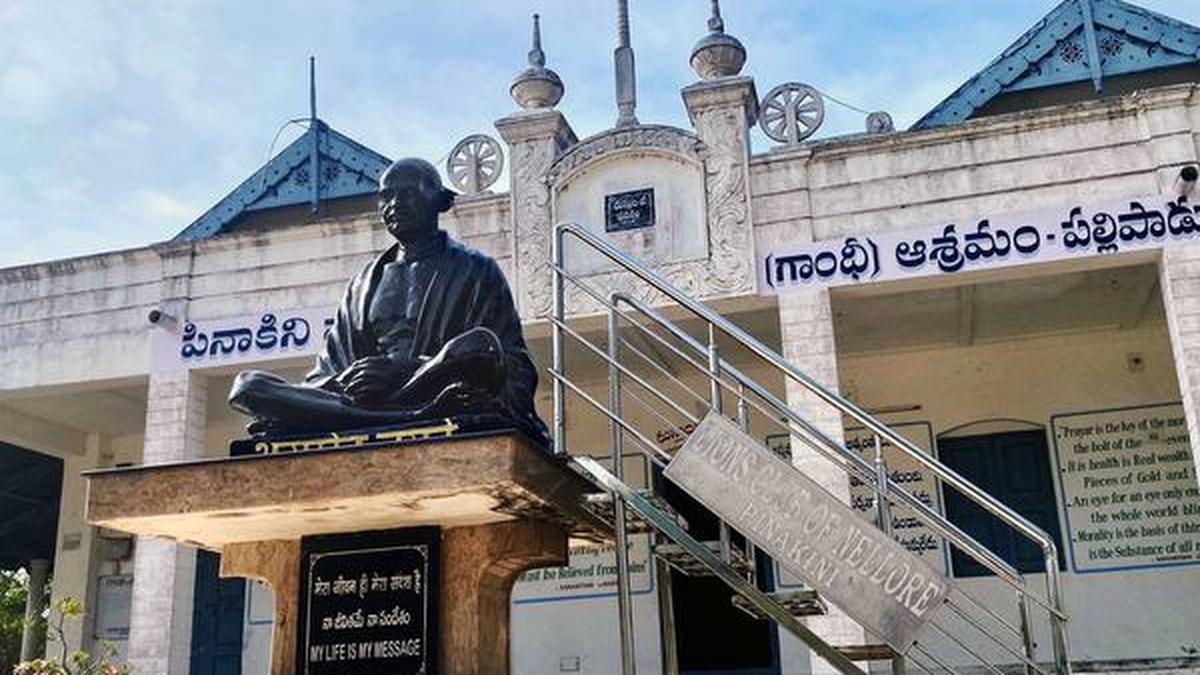The Pinakini Satyagraha Ashram at Pallipadu in the Nellore district of Andhra Pradesh is only a faded relic of the once sheenful place buzzing with activity, it used to be.
Hundred and three years ago, Pallipadu, a nondescript village on the banks of River Penna, became the vortex of the whirlwind of the Independence Movement in South India as it was from here that the message of Mahatma Gandhi was spread across the region.
Nellorians were left awestruck by the sheer presence of the national movement leader when on 7 April 1921, Mahatma Gandhi inaugurated Pinakini Satyagraha Ashram, the second Ashram in the country after Sabarmati, to spread the message of Gandhism, and it was in Pallipadu.

Gandhi arrived at the ashram upon the invitation of its founders, the Gandhian couple Digumarti Hanumanta Rao and Digumarthi Buchi Krishnamma, with a vision to sow seeds of freedom movement among the people there. The Mahatma stayed here for two days and formalised the launch of the freedom struggle. Activists of the Independence Movement from across the region made a beeline for the ashram take catch a glimpse of the scrawny man who achieved the mammoth task of kindling the spirits of lakhs of Indians and inspired them to break the shackles of British rule.
Ponaka Kanakamma, a Gandhian, had even given a ‘Niluvudopidi’, a tradition of stripping all the ornaments one is wearing, and offered the ornaments to Gandhi by placing them at his feet, asking him to use them for building the freedom movement. She had never worn any gold ornament since then. Ms. Kanakamma actively took part in the freedom movement and even sold her properties for charitable activities subsequently.

In 1925, the local leaders took it upon themselves to build a permanent building for the Pinakini Satyagraha Ashram. Ponaka Kanakamma offered thirteen acres of fertile land for developing the ashram on the banks of River Penna. The Indian National Congress donated ₹10,000, South Africa-based Rustomji sent ₹10,000 and a local ruler Munagala Raja gave ₹2,000 for the project.
In 1929, Pallipadu was back in the limelight when Gandhi paid a second visit to the ashram along with his wife Kasturba Gandhi. By then, the national movement had picked up popularity in the South. The visit brought national focus to this little village and reinforced Pallipadu’s Gandhian links.
The second visit, it is said, was not meant to just promote the freedom struggle, but to help sustain and spread the movement. Among the long-term measures taken to keep the local people engaged positively in the freedom movement activities was to teach Hindi language to so that it can bridge the language gap between South and North India and also help them stay up to date with national news.
Gandhiji also promoted yarn-making by training the locals in handling the traditional spinning wheel. This was done in a bid to promote the Khadi industry and rural employment and also to ensure self-reliance at the community level.
Harijanoddharana Movement
A decade later, when Gandhi started the Harijanoddharana Movement to give the ‘Harijans’ the right to entry to Hindu temples, Chaturvedula Venkatakrishnaiah, a resident of the predominantly Srotriyam Brahmin dwelling in Pallipadu Agraharam, defied the social norms of the day and convinced the villagers to allow the ‘Harijans’ into the temple.
This watershed moment eased the mental block in many rigid believers of the caste system and paved the way for communal harmony in the village and the region.
Ayurvedic treatment
The ashram also served as a home for Ayurvedic treatment. Freedom fighters who had turned severely sick after having served jail sentences were treated here till their total recovery. Even after India gained independence, Ayurvedic treatment was continued to be provided at this ashram till the late sixties.
However, the charm of the ashram and Pallipadu began to fade as time passed. Land sharks eyed the ashram’s huge landholdings. Even the lessee farmers became reluctant to pay the promised proceeds.
In the 2000s, the ashram committee had written to the Governor on the issues plaguing the place. The Governor in turn referred the issue to the Collector who handed over the facility to the Red Cross Society, Nellore, for upkeep.
The village had strong communist connections right from the beginning. After Patnam Vedachalam, a communist who had headed the Pallipadu village continuously for four decades after independence, Nellore Ravindra Reddy was elected its sarpanch in 1988, who strove to get the encroachments cleared.
“We got the building repaired by ensuring it retained the vintage look. We also got a huge statue of Mahatma Gandhi installed at the entrance. There is also a statue erected for the land donor Ponaka Kanakamma, in recognition of her commitment to develop the ashram from its inception”, says Mr. Ravindra Reddy.
Engineer Ganesham Krishna Reddy and a medical professional Dr. A.V. Subrahmanyam subsequently headed the Red Cross and worked towards safeguarding the property. “We need State intervention to take our goals forward”, says Dr. Subrahmanyam.
Later, an unexpected trouble—breach of lands caused by River Penna during the floods—hit the ashram. The gushing water flowing towards the Bay of Bengal ruptured its bund, washing away nearly five acres of its land. Building a retaining wall to safeguard the premises during the annual floods is a necessity, but no action has been initiated on this front.
The Red Cross could successfully get the encroachments cleared and protect the property from the clutches of land sharks.
Today, barring its Gandhian link, the ashram stands purposeless with no activities conducted as envisaged during its inception. It rarely gets visitors who appreciate its glorious past and several facilities launched here remain non-starters. The deaddiction centre, Gandhi digital museum and food court launched on the premises remain incomplete.
Member of Parliament (Nellore) Vemireddy Prabhakar Reddy announced that he would adopt Pallipadu and develop the ashram. His spouse and local MLA (Kovur) Vemireddy Prashanthi Reddy, during her campaign, promised to build a retaining wall to arrest further breaches caused by the Penna.
G. Kishan Reddy, as the then Union Minister of Tourism, visited this spot and offered support for its promotion. Similarly, Defence Research Development Organisation (DRDO) former Chairman and Scientific Adviser to Defence Minister Dr. G. Satish Reddy, who hails from Nellore, also promised to chip in with support.
Two Chief Ministers Nedurumalli Janardhan Reddy and Konijeti Rosaiah visited this ashram during their respective regimes and announced to bring in funds. In spite of all the big names and tall assurances, nothing has inched ahead so far.
Many non-starters
What was originally planned to be a digital museum remains a non-digital photo gallery on Gandhi. The digital museum is meant to provide information about various instances of Gandhi’s life when a visitor touches the screen. It is expected to provide in-depth knowledge about the incidents that happened in Gandhiji’s life and the way he tackled the challenges and welcomed the opportunities. However, the walls of the dark room merely showcase photographs of Gandhi participating in the freedom struggle, attending various events and meeting renowned personalities.
Similarly, the food court developed by AP Tourism Development Corporation languishes due to a lack of visitors. The ashram is tucked away from the town and certainly needs a food court as the visitors will not get to eat anything in the vicinity.
It was with this intention that the APTDC developed this facility that can cook lunch depending on the daily indent of visiting tourists. However, with the inflow getting minimal and the numbers turning highly unpredictable, the kiosk was found to be unviable. What greets the visitors today is a building that remains closed, bolted and locked.
Deaddiction centre in cold storage
Another major facility that has been relegated to cold storage is the deaddiction centre. With prohibition being one of Gandhiji’s avowed philosophies, a deaddiction centre was initially planned on the premises and was started with the funds provided by the Magunta Industrial Group as part of its Corporate Social Responsibility (CSR) activities, which however could not be completed it due to various reasons.
“We are still searching for sponsors to complete the work and hand the facility over to us. We have also proposed to the government to use our building as the deaddiction centre for the entire SPSR Nellore district,” says YSRCP MLC Parvathareddy Chandrasekhar Reddy, who currently heads Red Cross Nellore.
Aiming to increasing footfall throughout the year, Mr. Reddy plans to request the district education officials to make it mandatory for all the schools to undertake an annual excursion in batches to this spot so that the students imbibe the Gandhian values.
Also, bringing the elected representatives of the village, and mandal to finally the district level, such as sarpanches, Mandal Praja Parishad (MPP) presidents, Mandal/Zilla Parishad Territorial Constituency (MPTC/ZPTC) members, municipal councillors and municipal corporation corporators to this spot is expected to help them get a glimpse of the noble values that the Mahatma had stood for and propagated throughout his life which they are expected to practise throughout their political life.


